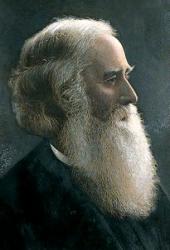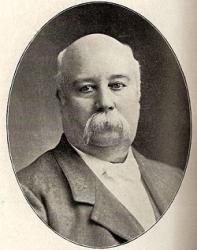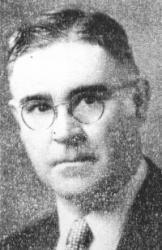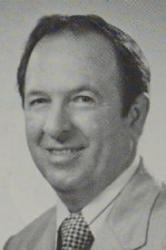Planning worship?
Check out our sister site, ZeteoSearch.org,
for 20+ additional resources related to your search.
- |
User Links
Person Results
William B. Bradbury

1816 - 1868 Meter: 11.11.11.11 with refrain Composer of "HIS MIGHTY LOVE" in The Evangelical Hymnal William Batchelder Bradbury USA 1816-1868. Born at York, ME, he was raised on his father's farm, with rainy days spent in a shoe-shop, the custom in those days. He loved music and spent spare hours practicing any music he could find. In 1830 the family moved to Boston, where he first saw and heard an organ and piano, and other instruments. He became an organist at 15. He attended Dr. Lowell Mason's singing classes, and later sang in the Bowdoin Street church choir. Dr. Mason became a good friend. He made $100/yr playing the organ, and was still in Dr. Mason's choir. Dr. Mason gave him a chance to teach singing in Machias, ME, which he accepted. He returned to Boston the following year to marry Adra Esther Fessenden in 1838, then relocated to Saint John, New Brunswick. Where his efforts were not much appreciated, so he returned to Boston. He was offered charge of music and organ at the First Baptist Church of Brooklyn. That led to similar work at the Baptist Tabernacle, New York City, where he also started a singing class. That started singing schools in various parts of the city, and eventually resulted in music festivals, held at the Broadway Tabernacle, a prominent city event. He conducted a 1000 children choir there, which resulted in music being taught as regular study in public schools of the city. He began writing music and publishing it. In 1847 he went with his wife to Europe to study with some of the music masters in London and also Germany. He attended Mendelssohn funeral while there. He went to Switzerland before returning to the states, and upon returning, commenced teaching, conducting conventions, composing, and editing music books. In 1851, with his brother, Edward, he began manufacturring Bradbury pianos, which became popular. Also, he had a small office in one of his warehouses in New York and often went there to spend time in private devotions. As a professor, he edited 59 books of sacred and secular music, much of which he wrote. He attended the Presbyterian church in Bloomfield, NJ, for many years later in life. He contracted tuberculosis the last two years of his life.
John Perry
William B. Bradbury
James Mountain

1844 - 1933 Meter: 11.11.11.11 with refrain Composer of "WYE VALLEY" in Timeless Truths Rv James Mountain United Kingdom 1844-1933. Born at Leeds, Yorkshire, England, he attended Gainford Academy, Rotherham College, Nottingham Institute, and Cheshunt College. He became pastor at Great Marlow, Buckinghamshire. Leaving the clerical field due to ill health, he conducted evangelistic campaigns in Britain (1874-82) and worldwide (1882-1889). An author, he wrote a number of books. He published a hymn book, “Hymns of consecration and faith”,and “Sacred songs for missions, prayer, and praise meetings” (1876). He died at Tunbridge Wells, Kent, England.
John Perry
James Mountain
Chas. H. Gabriel

1856 - 1932 Person Name: Charles H. Gabriel, 1856-1932 Meter: 11.11.11.11 with refrain Author of "I Will Not Forget Thee" in Baptist Hymnal 1956 Pseudonyms: C. D. Emerson, Charlotte G. Homer, S. B. Jackson, A. W. Lawrence, Jennie Ree
=============
For the first seventeen years of his life Charles Hutchinson Gabriel (b. Wilton, IA, 1856; d. Los Angeles, CA, 1932) lived on an Iowa farm, where friends and neighbors often gathered to sing. Gabriel accompanied them on the family reed organ he had taught himself to play. At the age of sixteen he began teaching singing in schools (following in his father's footsteps) and soon was acclaimed as a fine teacher and composer. He moved to California in 1887 and served as Sunday school music director at the Grace Methodist Church in San Francisco. After moving to Chicago in 1892, Gabriel edited numerous collections of anthems, cantatas, and a large number of songbooks for the Homer Rodeheaver, Hope, and E. O. Excell publishing companies. He composed hundreds of tunes and texts, at times using pseudonyms such as Charlotte G. Homer. The total number of his compositions is estimated at about seven thousand. Gabriel's gospel songs became widely circulated through the Billy Sunday-Homer Rodeheaver urban crusades.
Bert Polman
Chas. H. Gabriel
J. H. Fillmore

1849 - 1936 Person Name: James H. Fillmore, 1849-1936 Meter: 11.11.11.11 with refrain Composer of "GOING DOWN THE VALLEY" in The Christian Hymnary. Bks. 1-4 James Henry Fillmore USA 1849-1936. Born at Cincinnati, OH, he helped support his family by running his father's singing school. He married Annie Eliza McKrell in 1880, and they had five children. After his father's death he and his brothers, Charles and Frederick, founded the Fillmore Brothers Music House in Cincinnati, specializing in publishing religious music. He was also an author, composer, and editor of music, composing hymn tunes, anthems, and cantatas, as well as publishing 20+ Christian songbooks and hymnals. He issued a monthly periodical “The music messsenger”, typically putting in his own hymns before publishing them in hymnbooks. Jessie Brown Pounds, also a hymnist, contributed song lyrics to the Fillmore Music House for 30 years, and many tunes were composed for her lyrics. He was instrumental in the prohibition and temperance efforts of the day. His wife died in 1913, and he took a world tour trip with single daughter, Fred (a church singer), in the early 1920s. He died in Cincinnati. His son, Henry, became a bandmaster/composer.
John Perry
J. H. Fillmore
Henry J. Zelley
1859 - 1942 Meter: 11.11.11.11 with refrain Author of "He Brought Me Out" in Timeless Truths Henry Jeffreys Zelley was born at Mt. Holly, NJ, on Mar. 15, 1859. Educated in the Mt. Holly public schools, at Pennington Seminary, and at Taylor University, where he earned his M. A., Ph. D., and D. D. degrees, he became a Methodist minister in 1882 and first served in the New Jersey Conference as a statistical secretary, treasurer, and trustee, becoming a promoter of the campmeeting movement.
Noted for his evangelistic fervor, Zelley produced over 1500 poems, hymns, and gospel songs. One of his songs, "He Brought Me Out" with music by Henry L. Gilmour, appears in several denominational hymnals. Cyberhymnal also lists "When Israel Out of Bondage Came" or "He Rolled the Sea Away" with music by Gilmour too. Another of Zelley’s songs, "The Mountains of Faith" with music by M. L. McPhail, is found in Sacred Selections. After working with nineteen different churches in the New Jersey Conference over his lifetime, Zelley, who also served as a trustee of Pennington Seminary, retired in 1929 and died at Trenton, NJ, on Mar. 16, 1942.
--http://homeschoolblogger.com/hymnstudies
Henry J. Zelley
H. L. Gilmour

1836 - 1920 Person Name: H. L. G. Meter: 11.11.11.11 with refrain Author (refrain) of "He Brought Me Out" in Timeless Truths Henry Lake Gilmour United Kingdom 1836-1920. Born at Londonderry, Ireland, he emigrated to America as a teenager, thinking he wanted to learn navigation. When he reached the U.S., he arrived in Philadelphia and decided to seek his fortune in America. He started working as a painter, then served in the American Civil War, where he was captured and spent several months in Libby Prison, Richmond, VA. He married Letitia Pauline Howard in 1858. After the war he trained as a dentist and did that for many years. In 1869 he moved to Wenonah, NJ, and helped found the Methodist church there in 1885. He served as Sunday school superintendent and, for four decades, directed the choir at the Pittman Grove Camp Meeting, also working as song leader at camp meetings in Mountain Lake Park, MD, and Ridgeview Park, PA. He was an editor, author, and composer. He edited and/or published 25 gospel song books, along with John Sweney, J Lincoln Hall, John J Hood, Howard Entwistle, Joshua Gill, E L Hyde, Milton S Rees and William J Kirkpatrick. He died in Delair, NJ, after a buggy accident.
John Perry
H. L. Gilmour
John Stainer

1840 - 1901 Meter: 11.11.11.11 with refrain Arranger of "JACOB'S LADDER" in Trinity Hymnal (Rev. ed.)
John Stainer
J. M. Henson

1887 - 1972 Person Name: John M. Henson Meter: 11.11.11.11 with refrain Author of "Anywhere Is Home" in Timeless Truths
J. M. Henson
Alton H. Howard

1925 - 2006 Person Name: Alton Howard Meter: 11.11.11.11 with refrain Arranger of "TO GOD BE THE GLORY" in Songs of Faith and Praise
Alton H. Howard
Mrs. C. H. Morris

1862 - 1929 Person Name: L. N. M. Meter: 11.11.11.11 with refrain Author of "Victory All the Time" in Timeless Truths Lelia (Mrs. C.H.) Morris (1862-1929) was born in Pennsville, Morgan County, Ohio. When her family moved to Malta on the Muskingum River she and her sister and mother had a millinery shop in McConnelsville. She and her husband Charles H. Morris were active in the Methodist Episcopal Church and at the camp meetings in Sebring and Mt. Vernon. She wrote hymns as she did her housework. Although she became blind at age 52 she continued to write hymns on a 28-foot long blackboard that her family had built for her. She is said to have written 1000 texts and many tunes including "Sweeter as the years go by."
Mary Louise VanDyke
Mrs. C. H. Morris


 My Starred Hymns
My Starred Hymns

